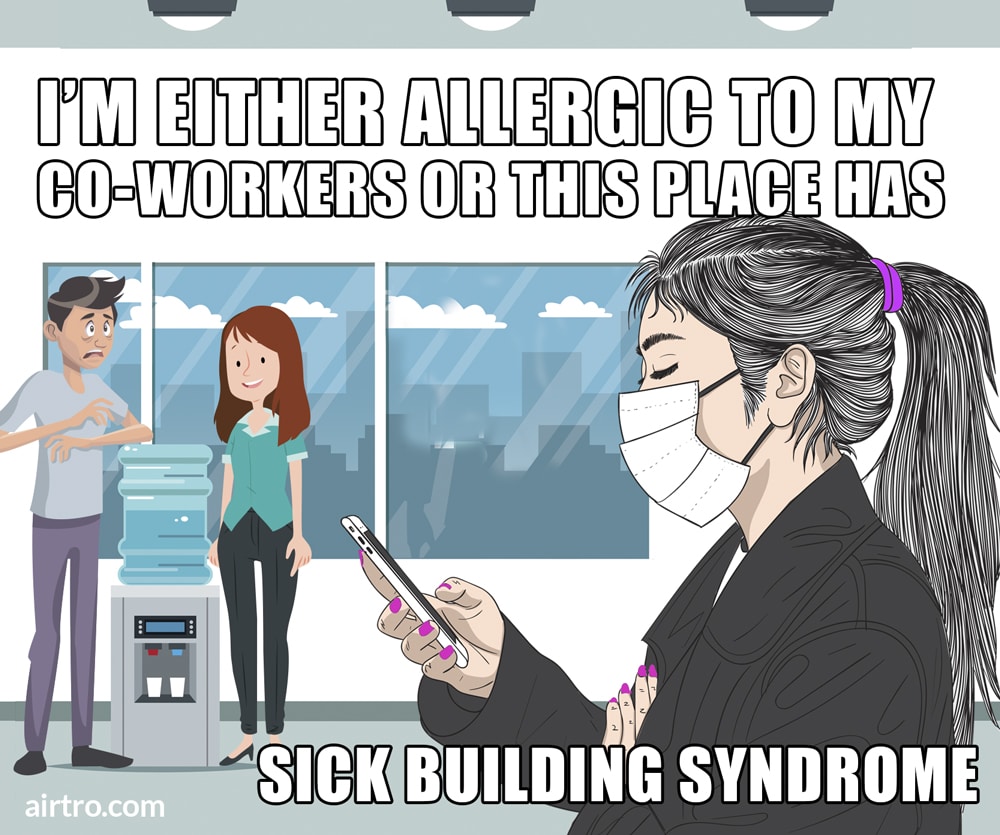Contaminated duct systems can present hidden but dangerous issues for homeowners and office workers
Respiratory problems can happen all year round. Symptoms like coughing, a runny nose, or feeling just kind of run down are chalked up to a runaway flu or cold. Soon your whole family is feeling under the weather, or you have multiple workers calling in sick, leaving the team in the office overwhelmed because they’re so short staffed.

Is it a virus? Or is it sick building syndrome?
These days, commercial and residential buildings are designed to be as weatherproof as possible to promote energy efficiency. And central air conditioning, the system that is supposed to keep everyone comfortable no matter what the temperatures outside, also ensures that everyone is sharing the same air, over and over. Few homeowners or office workers ever open a window, or leave a door open, whether it’s pleasant outside or not.
Unfortunately, however, airborne viruses, molds and more can be easily transmitted through faulty ductwork. Superior weatherproofing can also mean riskier air quality. In fact, the EPA estimates that indoor air is five to six times more polluted than outdoor air, and polluted air causes 94% of all respiratory problems.
Concerned? There is a solution.
The monitoring service Air Advice for Homes can remotely track the quality of the indoor air within your home or commercial facility. It does so unobtrusively, tracking six different categories of indoor air pollution. The results are sent via email, and include helpful charts and graphs that give you answers in a clear, easy to understand format.
Air Advice can evaluate for the presence of particulate matter: the allergens, bacteria, and dust that can aggravate asthma, cause sickness and otherwise disrupt the lives of your family or coworkers. It screens for the volatile organic chemicals like benzene and formaldehyde that can run property owners afoul of state and federal requirements regarding material safety and air quality, along with carbon dioxide levels that while rarely harmful, can result in drowsiness and lost productivity. You’ll also be able to determine levels of carbon monoxide, the odorless, toxic gas that occurs in any home or building that uses appliances running on gasoline or natural gas.
And what about your HVAC ductwork? For commercial building owners, did you know that 50% of all major office buildings have contaminated duct systems? If not properly maintained, they can be a hotbed for growth of molds and bacteria. It is critically important for both residential and commercial property owners to keep up with the preventative HVAC maintenance essential to reducing indoor air quality problems.
Hold On. It’s probably good news.
Luckily, more than 90% of the Air Advice tests typically show that a home or building is in fine shape, with no concentrations of harmful or nuisance pollutants. For homeowners, that means the peace of mind that comes from doing the footwork to keep your family safe. For commercial property owners, it shows a conscientious respect for your employees in the form of a detailed report on file, available for all who ask.
But just in case: don’t be in the 10% with a serious problem. Discuss your concerns with your HVAC contractor. Have the air in your home or commercial building sampled with the Air Advice monitor. Let your family or your staff know you take their health and well-being seriously.
Have questions about your indoor air quality? Unsure what kind of HVAC maintenance your system needs? We can help! Call Air-Tro today! (626) 357-3535
